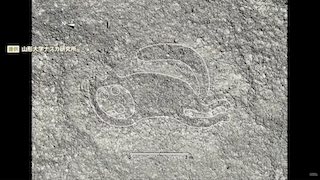Mar 13 (newsonjapan.com) - EdTech, which is an abbreviation of “educational technology,” is a term that refers to the use of IT tools in the classroom.
Leveraging technologies helps to facilitate learning and increase student outcomes. As you explore the history of EdTech and its key turning points, it's essential to consider how modern businesses in the education sector, such as those utilizing the Best LLC Service, have contributed to the growth and innovation of educational technology. The whole sector prioritizes the development of the tech aspect to better serve learners’ needs. In fact, technology has fundamentally transformed education. The sphere witnessed a great leap forward from pencils, paper, and film projectors in the 1900s to online write my paper for me services and immersive learning technologies we use today. Let’s take a quick look at the evolution of EdTech and its impact.
1980s: First attempts to use computers in the classroom
In the early 1980s, educators started to incorporate computers to enhance instruction in the classroom. Professor Seymour Papert was the first to use microcomputers to teach students the foundations of programming. A few years later, Apple computers appeared in school and helped teachers check students’ knowledge. An Apple IIe was donated to 9,000 schools in California. Furthermore, in 1988, more than a billion students used Microsoft Office in their studies.
1990s: Smart Board and TI-83
In 1991, teachers could start incorporating interactive learning with Smart Board. Five years later, TI-83 appeared and became the most popular graphing calculator for teachers and students.
1999: Emergence of e-learning
Although the term “e-learning” was not new in 1999, this was a year when the concept of learning with the help of technological tools gained popularity and became widely discussed. Several schools developed e-learning courses, which turned out to be rather costly in terms of production and presentation at that time. Yet, it was the first step toward MOOCs and successful educational platforms we know today.
2001: Standards in the creation of e-learning content
In the early 2000s, people did not stop exploring EdTech. The idea that the future is digital was already popular among educators. E-learning got larger investments and developed a professional approach to content creation. Learning standards from traditional education, as well as orientation on evidence, were adopted in e-learning. IMS and SCORM influenced content for courses, assessment, and learning environment most.
2002: First open educational resources from MIT
MIT released the first open educational resources (OER). They contained learning materials from 1,800 courses. OER could be used by anyone for free. It was the beginning of the open education movement with accessible textbooks and practices.
2003: Blogging as part of education
Even though blogging started with personal diaries, it grew rapidly, and soon it started to acquire new purposes and applications. People got a chance to generate content without limitations, including educational materials. It became easy to share information and reach a wide audience. Today, blogging still functions as part of education. It gives both teachers and students space for online discussions and portfolios.
2004: Learning management system as a solution for e-learning
The learning management system (LMS) started a new stage in the development of e-learning. It provided a single solution for online communication and content management, which is suitable for all disciplines. At that time, LMS was an effective and time-efficient way to deliver e-learning materials.
2005: YouTube and educational video content
YouTube entered the educational landscape in 2005. It allowed distributing tutorials and lessons. TED and MIT OpenCourseWare were the first projects that started to experiment with the new format. A year later, Sal Khan started his YouTube channel, which soon turned into a separate organization, the Khan Academy. This and multiple other channels gained billions of views and showed the educational potential of video distribution.
2008: First electronic portfolios
With each year, students become more and more involved in EdTech. In 2008, e-portfolios started to gain popularity as means to show a learner’s educational achievements. It served as motivation for students to take charge of their own progress.
2009: The influence of microblogs and social media on communication
Since the first microblogs and social media were founded, people had high hopes for these platforms. Despite some drawbacks, they helped to reach large audiences and start global discussions. Enhanced communication became the main benefit of microblogging and social media that helped to improve learning practices.
2012: MOOCs
The next crucial change in EdTech is the emergence of massive online open courses (MOOCs). With support from top universities, they combined elements of previous IT tools to improve online education. Millions of people got the opportunity to access quality learning materials and study online in a self-directed manner.
2014: Learning analytics
Technology allowed collecting and analyzing large sets of data. It enabled learning analytics with its positive impact on student performance. It helps learners to identify and fill gaps in their knowledge or skills. Although the interest in learning analytics appeared back in 2014, its full potential is yet to be explored.
EdTech Today
Digital skills and technological competence became vital in the 21-st century. It makes EdTech a top priority in classrooms all over the world. Educators are looking for new ways to ensure meaningful engagement with the content of lessons, incorporating new and new technologies. They help to promote creativity, innovation, and effective communication. AI, immersive learning, “flipped” classrooms, and game-based curricula enable learners to go above and beyond in their experiments and exploration.















